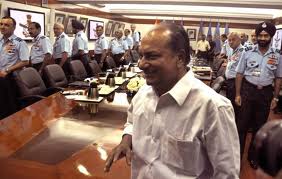
New Delhi, April 10: Dismissing as "rumours" reports about shortage of certain tank ammunition, Defence Minister A K Antony today said there will always be "shortcomings" but the country was in a much stronger position as compared to the past.
"These are all rumours. I can assure you that the country is fully prepared. India is in much more strong position as compared to the past.
"There will always be some shortcomings and that is also in the process. We can't expect 100 per cent requirements to be fulfilled and also that entire force is not on the front. They are all spread over," he told reporters here.
The minister was commenting on news reports suggesting that only four days of ammunition was left with the Army's armoured regiments on the sidelines of the two-day IAF Commanders' Conference.
In his letter written to the Prime Minister in March, Army Chief Gen V K Singh had also pointed out that armoured regiments were facing a critical shortage of ammunition.
On the issue of the decision of Parliament's Standing Committee on Defence to call the three service chiefs to brief it about defence preparedness, Antony said, "I am not the man to decide. This decision relates to the Standing Committee".
On the IAF conference, the Defence Minister expressed happiness over the fact that the Air Force had concluded 317 capital acquisition contracts worth over Rs 1.11 lakh crore in the last five years.
"We are also very confident about our preparedness. Some new platforms have already started coming and more will come in the near future," he said.





Comments
Add new comment